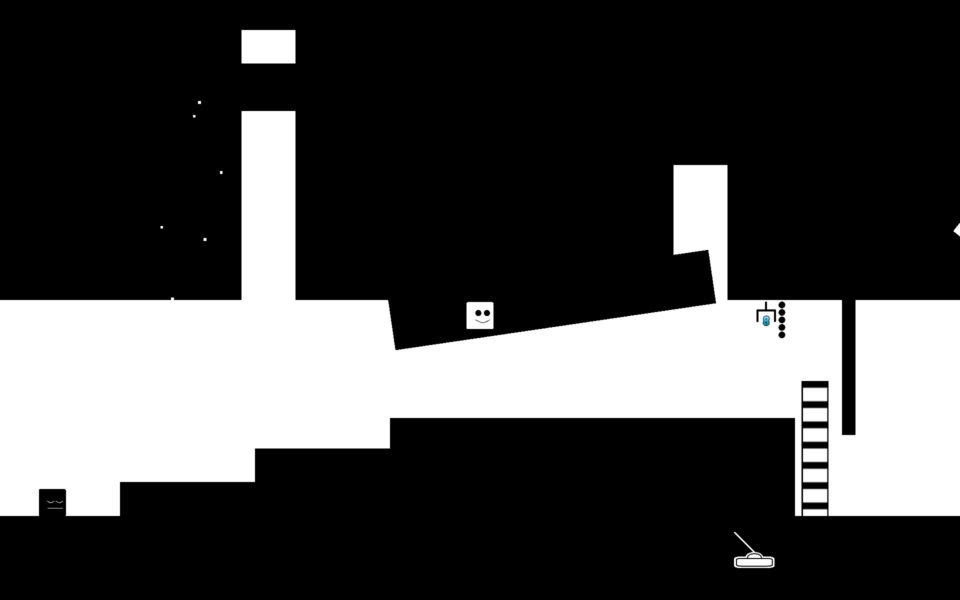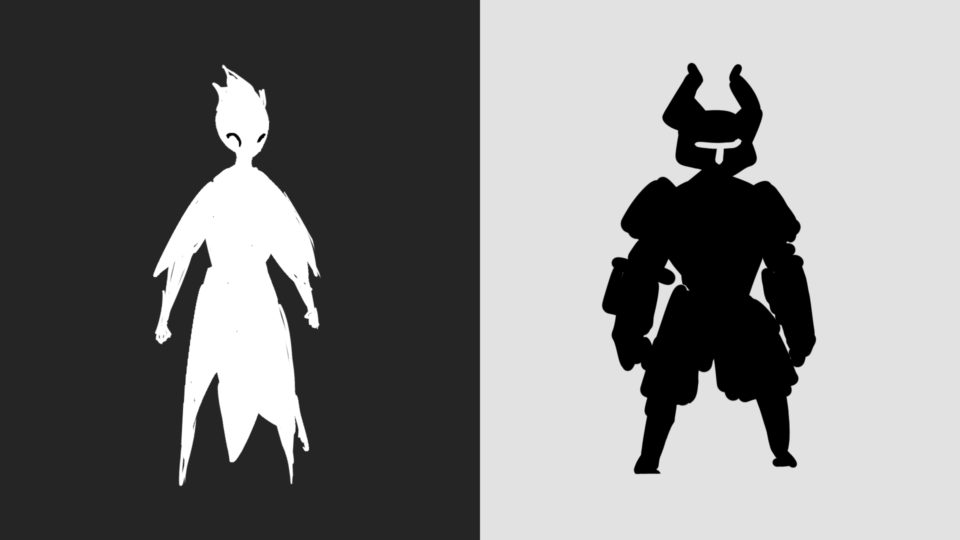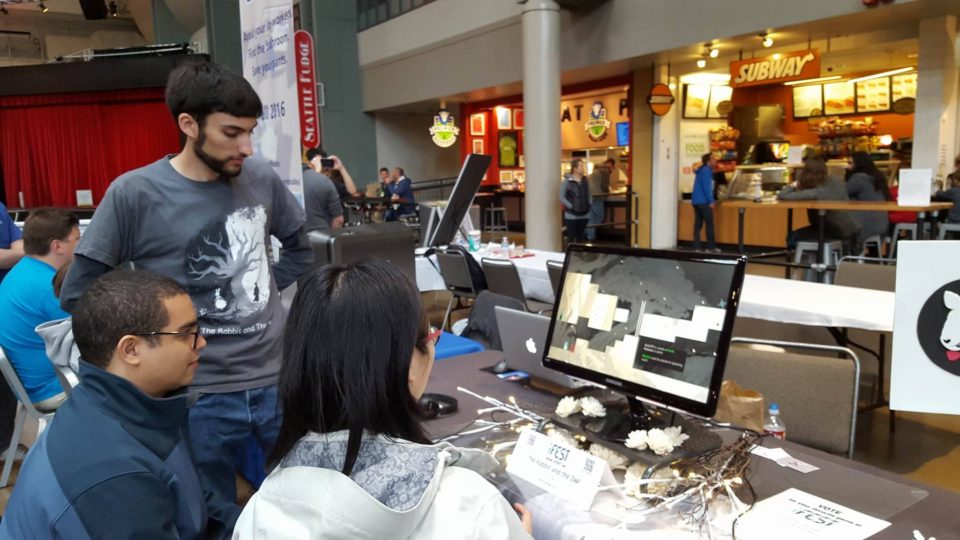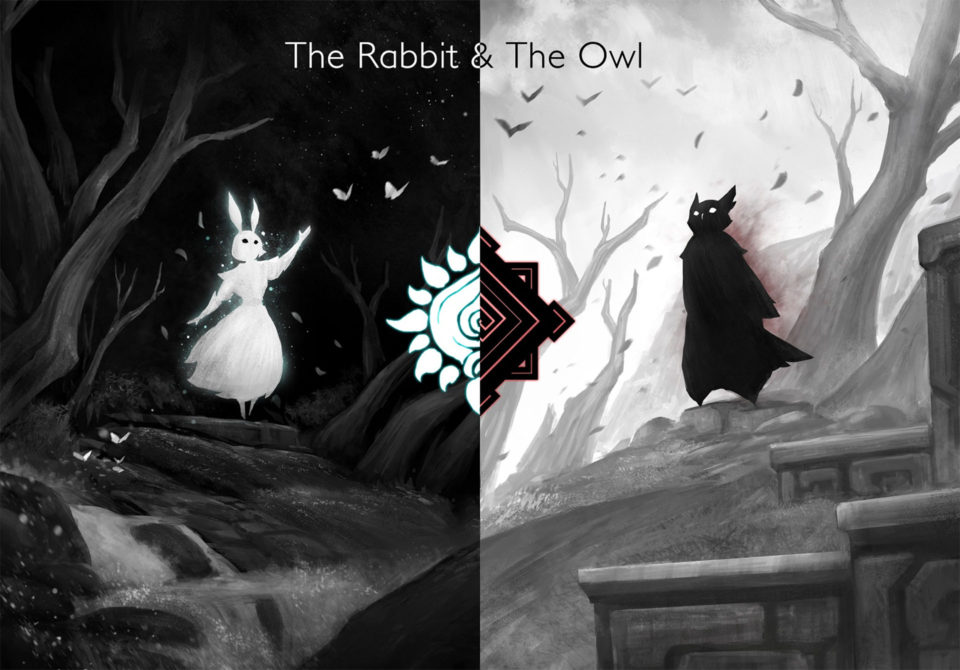Founder of Formal Sheep, Gary Chao, has been hard at work on their game The Rabbit and the Owl, which they recently got a chance to show off at Casual Connect USA and the Indie Prize showcase. Coming off of the positive reception to the puzzle game at the event, they sat down and talked with us about their upcoming game.
Getting the Greenlight
One of the keys to indie success these days is being liked by the Steam community at large. There’s no guarantees that a game will be approved by the Steam Greenlight users. Gary put the game up on Steam Greenlight in March 2016 with much trepidation.
“We announced the game with Steam Greenlight in March. I really didn’t know what to expect, and I had a pit in my stomach,” they said. “What if people didn’t like the game? I actually didn’t eat or sleep for the whole day when we launched the Greenlight. Honestly my jaw dropped when I saw how much traffic we were getting from users and the nearly 2:1 ratio of yes to no votes. We actually ended in the top 100 at rank 24 by the end of the campaign (it compares itself to other games currently on Greenlight).”
“Having the game approved and seeing all the encouraging comments from people has really helped motivate me to make the game better,” they noted. “I think it really just helped calm my nerves and assured me that others would like the game. Being in stealth mode for a while kind of made me stir crazy. Friends and family said they liked it, but even though I would tell them to be brutally honest they could still sugar up their comments somewhat. So putting it out there in the cold and seeing that people reacted to it positively was definitely an amazing feeling. I carry their enthusiasm with me always as a reminder to myself when things get difficult.”


Inspired by the Best
Just looking at The Rabbit and the Owl, it has a very evocative feel to it. It’s not surprising then in asking for the inspirations, Gary drew on some of the most acclaimed games of the past generation when making it. The game also reflects something deeper in their personal experiences, saying something about the nature of relationships.

“Some of my all-time favorite games are Braid, Limbo, and Dark Souls. Games in which you can’t simply keep going forward and expect to win usually intrigue me the most because there is usually a lot of thought that goes into making sure the player gets to have a challenging but rewarding experience,” said Gary. “I wanted to take elements from each of these games that I loved most - interesting mechanics, puzzles, the joy of discovery, a solid union of visuals, sound, and music, and stories told through metaphors and subtext. The Rabbit and the Owl means so much to me as it is my way to turn around and try to contribute to the games industry that has impacted me so much.”
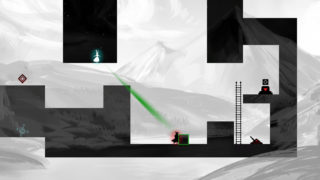
The Rabbit and the Owl has not only it’s own story, but a larger mythology that players will discover as they play through. The game was initially not narrative driven and didn’t initially have these story bits, but Gary says they evolved organically during development.
“You know, I never intended much with the game at first. It kind of evolved organically over time. It started out with just black and white squares and the characters being blobs,” they noted. “But like I mentioned above, I think a sort of subconscious story started to take root in my head. It was difficult to really pinpoint what I wanted to tell, but honestly it all came flowing out in about a two hour session after an amazing music piece that my music composers created for the game. You can actually check it out on their Soundcloud here: the song is entitled ‘Hanakotoba’ (the other songs are also great!). It really amazes me how much music can bring out emotions and thoughts that are buried deep or serve as a medium to help bring a voice to something that you can’t easily put words to.”
While The Rabbit and the Owl had an evolving story over time, so too did the graphics. Artist Andrew Chen has hugely influential in the aesthetic direction of the game, framing the visual design in a very particular way.
“When I showed the game to Andrew, I only had black and white squares and player blobs. That’s it. I knew I wanted some spirit animals. I knew I didn’t want anything where light = good, dark = evil, and that it was just more two sides of the same coin,” said Gary. “As someone whose brain is not wired in art, it was hard for me to envision something that would work while still making sure that the level design of negative space was still crystal clear. I felt like any sort of texture or image would obfuscate the purity of the level design. But what he came up with definitely blew me away. We played around with some animals (the dark character used to be a knight in armor at one point) and we finally settled on a rabbit and owl.”
The Price of Freedom
Gary loves the freedom that being an independent developer grants them. It allows them to make their vision of the game without compromising what they want to meet a publishers’ vision. On the other hand, they are responsible for everything in the game, which can be a lot of work.
“I’ve been playing games all my life. I knew I wanted a career in games,’ Gary detailed. “I didn’t know making my own game was even an option until I started to see the growth in the indie game industry of hits every year with small teams or even individuals. As I started to experiment around with Unity and realized how accessible making games was, I knew I wanted to give myself a shot. Having programming skills that I learned from college definitely made it easier to jump into it. I was inspired because the people making these indie games were just like me, so I thought why couldn’t I also do it? I’ve read about people making games on the side, but I just didn’t want my attention split, so I decided to move back home to pursue it. I thought if I don’t do it now, years down the line I might wonder ‘what if.’”
“I went into college as a mechanical engineer,” they noted. “We’re required to take the first course for computer science, so I took that during my first quarter at school. I instantly decided, ‘This is what I want to do.’ The course material just clicked. I didn’t even consider coding before, but I’m glad I took the required class first. As for design, I became interested in designing games after dabbling in the Starcraft and Warcraft custom map editor. Although I didn’t really make that much I like to think it planted the seed early on.”
When asked about someone else becoming an indie game maker, Gary said that persistence is key. “Chances are if it’s something you would enjoy, someone else will enjoy it too,” they detailed. “Be mindful of how much time and resources you have at your disposal and design a game that you can commit to and fulfill. Limiting the scope of a game is a common problem so just be aware of that.”
The Many Hats of an Indie Developer
While the control they have as an indie developer has been exhilarating, it can also be exhausting. Not all of the time spent as an indie developer is on the game; there are many hats that have to be worn to make sure a small game is a success.
“I wish I could spend 100 percent of my time developing and improving the game, but sadly I am missing that one crucial person to help me deal with PR and business development - so I have to do that stuff myself,” said Gary. “I’d say this month so far has been the most painful because most of my time recently has been spent on preparing for PAX and the Kickstarter, leaving the actual game development improvements (like trying out new shaders for the game) in limbo. But everything is just one step at a time, setting tangible goals for each day and completing them. I stay pretty organized with a list of everything I need to do and just check things off as I go along. As I mentioned earlier, being persistent is key as a game dev, and I know the stuff that needs to be done is not infinite.”
On top of all their other duties, Gary says the most challenging part of all is discovering out how other players experience the game. “As a game dev, you play with your own system so much that you just understand it inside and out. It’s tough to get an outside perspective. Even if you have friends who will help test the game for you, they eventually become too familiar,” they said. “Finding fresh perspectives and admitting that there are some problems that you have to change or even cut is challenging. The most rewarding part is definitely seeing people play and enjoy something especially when it all clicks together for them. I’ve shown at a few game events so far and even after hours of playtesting I still never get tired seeing new people playing the first few levels over and over, because their experiences are all different in some way. I can’t wait to see what the masses will think when the game is released, for better or worse.”
Of course, Gary found the experience was all worth it when they confirmed that they were going to PAX to show off The Rabbit and the Owl. “From our humble beginnings in my parents’ basement to seeing the excitement in people’s eyes playing the game at different expos has been a crazy journey, especially since this is our first game and we didn’t know what to expect,” they said, adding, “I’d say exhibiting the game many hours at events have also helped shape the game to be stronger, but ultimately it was the amazing work of everyone on the team that led to this moment. I feel like the art by Andrew Chen and the music by David Huff and Patrick Neff have been especially key to fleshing out the atmosphere and convey the feeling we wanted for the game. It’s funny because none of us had worked on a game before, but all of a sudden everything just clicked together it was just perfect.”
A Purposefully Minimalist Presentation
In the level design of The Rabbit and the Owl, Gary designed the game not unlike the seminal Braid and Limbo in terms of having a minimalist presentation. In terms of art and atmosphere, they named Journey, Atlantis: The Lost Empire, and Dark Souls as inspirations. The idea was to go for something that had an advanced-but-ancient feeling.
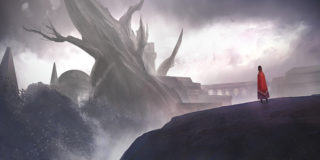
“Then we design around that particular interaction by asking ourselves “how should the player get to this point and what should they now do with this information?” So we build more interactions before and after the main ‘a-ha!’ moment that we wanted. Just like that, a puzzle is born. The whole process takes anywhere from 1-3 days for any particular level.”
Like many developers, when Gary hits a creative block when it comes to development, they do something else, whether that’s watching a movie, reading the news or playing other games. “I find that lingering on a problem doesn’t do any good because your mind is usually stuck in a loop that’s causing the problem in the first place,” they noted. “I think it’s just unlikely that you’d get a sudden epiphany in a short time span. For me, I’m fortunate that creative blocks don’t have too much of a bearing on me - but maybe I haven’t been challenged with the right problem yet. I can’t say for sure that I’ll never have an intense creative block.”
Making the Next Undertale
Like a lot of indie developers, Gary foresees a huge future for VR indie games. Unlike a lot of those same developers, they don’t expect VR to become mainstream the way some other people do.
“I’d say games that can be designed with VR as optional will do the best since there will be no extra hardware requirement,” states Gary. “The fact that there are a lot of indie games competing for attention will mean having VR will make you stand out more easily, which I think can be enticing and draw more devs to do it. I believe dev kits are available, so it shouldn’t be too much extra money to develop for them - just more time. I might mess with VR a bit, but at this point I’m unsure.”
As for their ultimate project, Gary would love to create the next RPG classic. “I know that’s a flooded genre and a ton of people love trying to make an RPG that hits their nostalgia buttons, but I think there’s just limitless opportunities there. An RPG is all-encompassing. It can have as much or as little as you want. It can include a bunch of tough puzzles that you might find in a puzzle-platformer. It can have a great story, great characters, great plot. RPGs are incredibly complex. I think those are the types of games that stick with people the most (think Final Fantasy, Chrono Trigger, Undertale, etc.).
Finishing Touches with Kickstarter
While much work on the game has been done, they are looking to add more to the game using Kickstarter. The crowdfunding approach will be used to both get more attention out about the game and raise that little bit of extra capital to make the game just that much better.
“The first and foremost benefit [of Kickstarter] is being able to commit more resources to making the game better. Though the core of the game is pretty much finished, there’s a lot to be desired especially in the visual department,” said Gary. “I hope to really focus on improving and polishing every bit of visual detail to make it as good as we can. We’re not perfect, but we want to deliver the best game possible.”

“’Improving visuals’ is a pretty abstract concept so it’s hard to nail it down,” they noted. “Some more tangible examples that we want to do is include online co-op (since it’s only local right now), a level editor, and a co-op campaign. I’ve been paying everything out of pocket and with some help from friends and family, so it would help immensely to receive funding from a successful Kickstarter campaign.”
Comments


